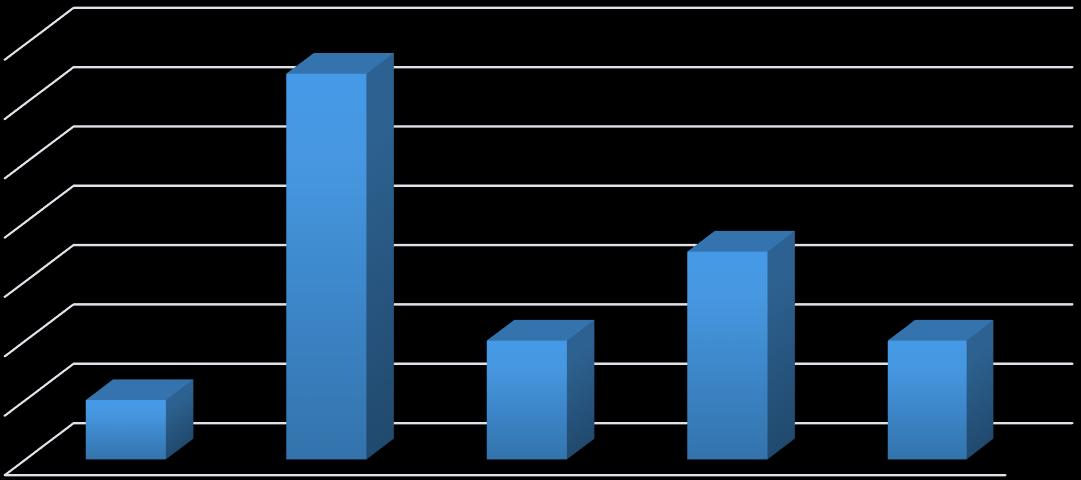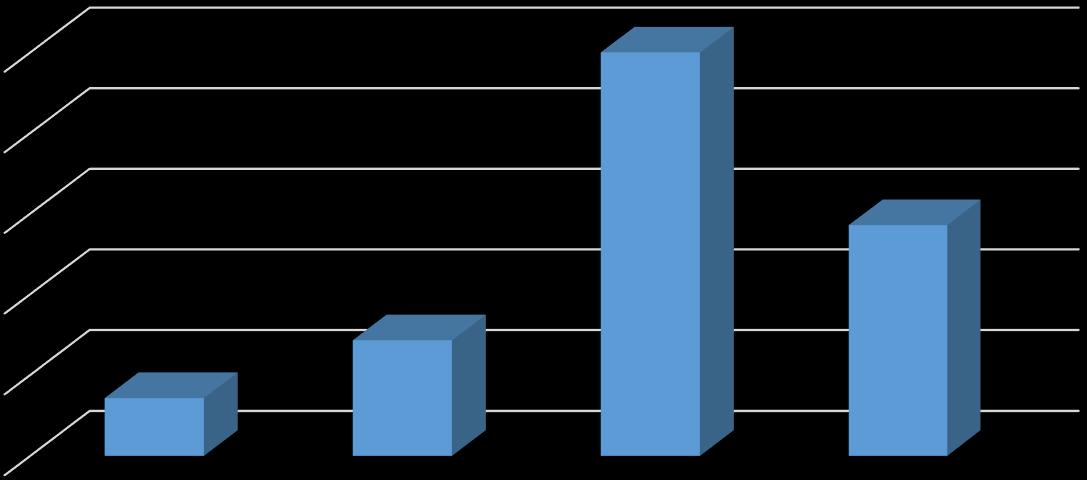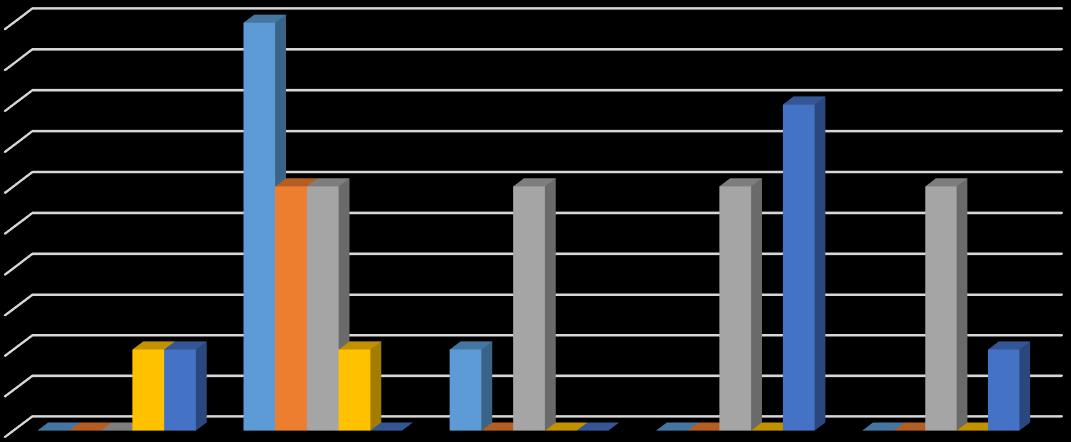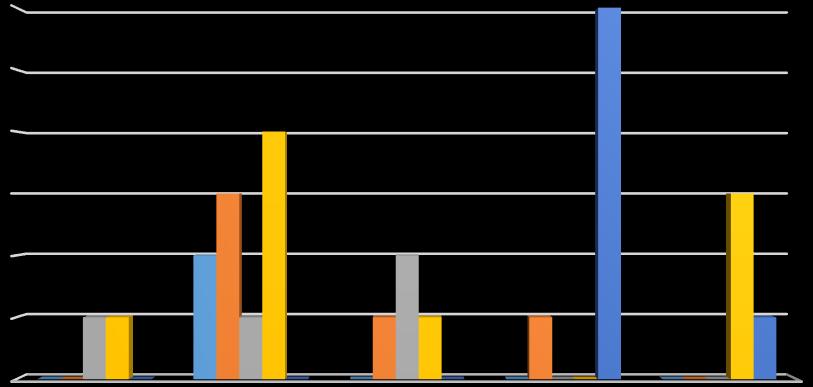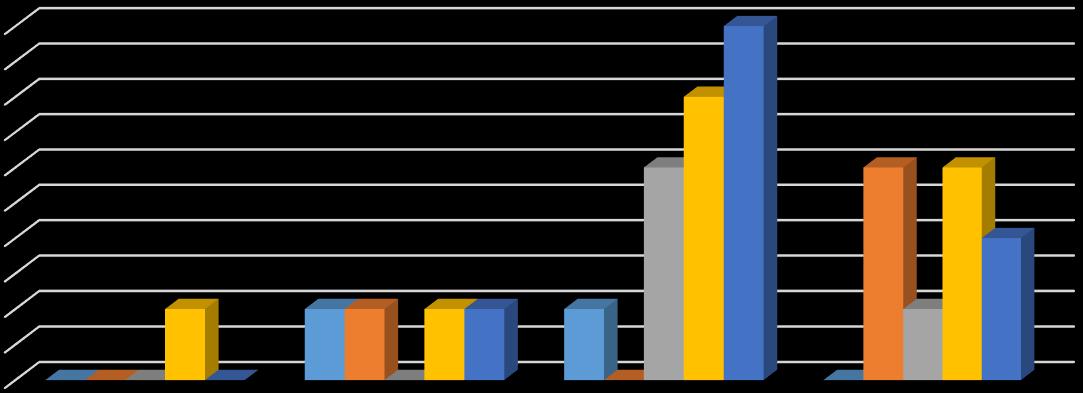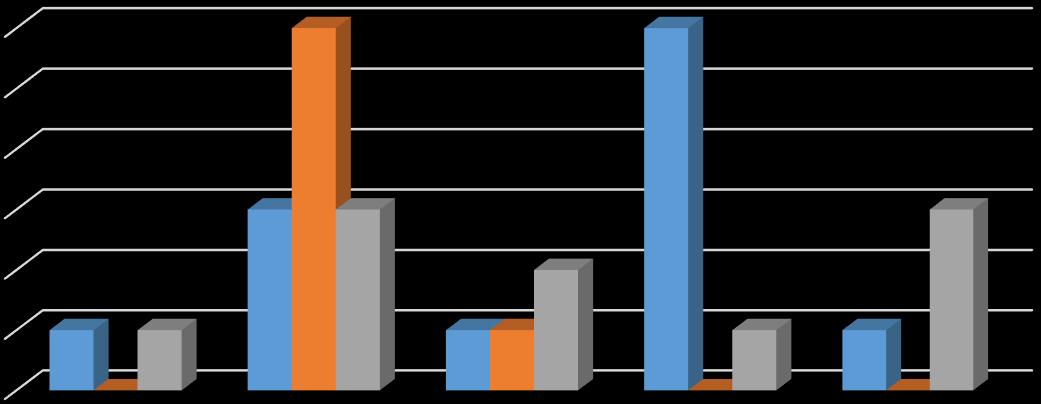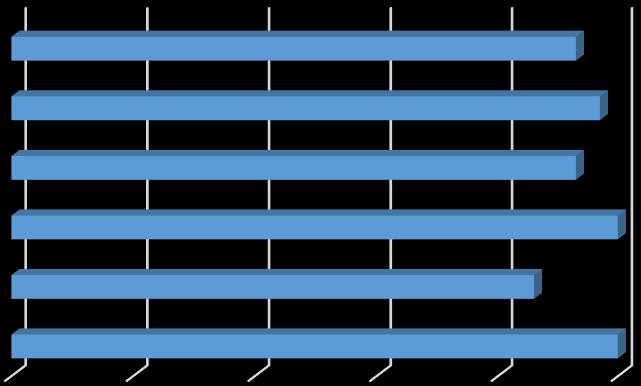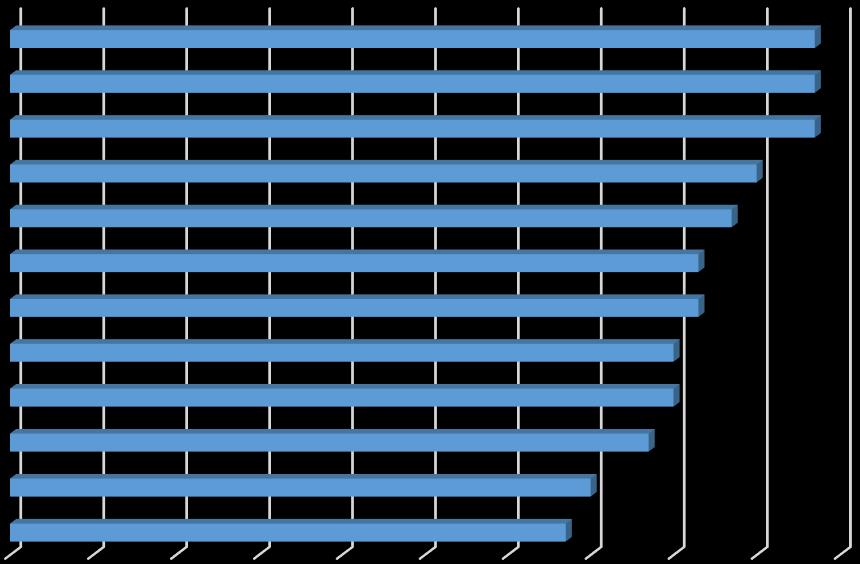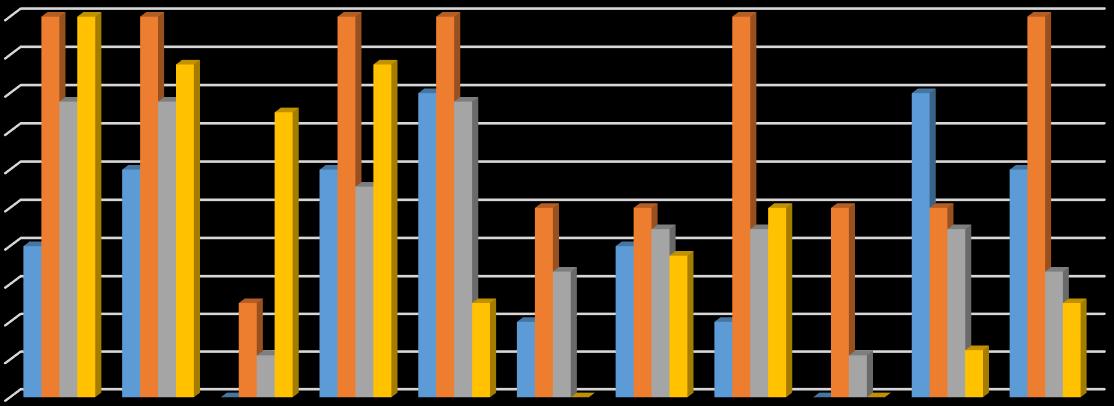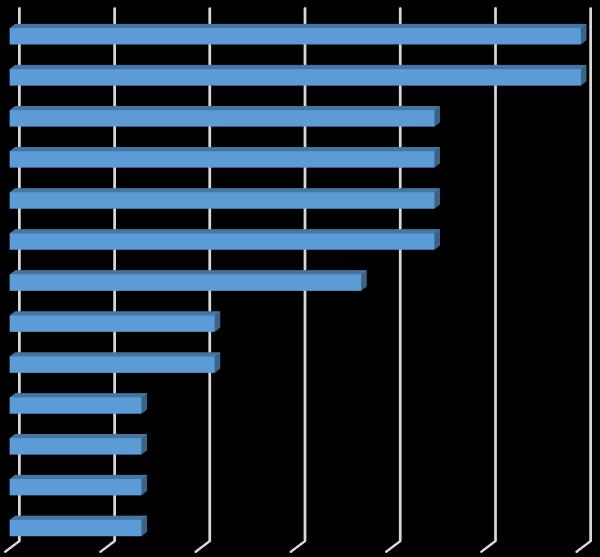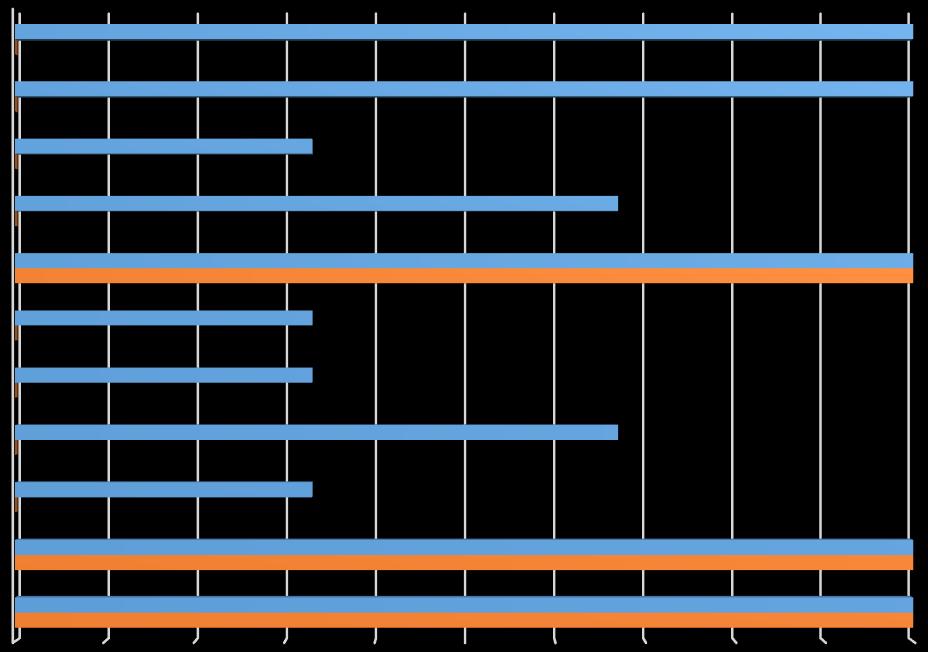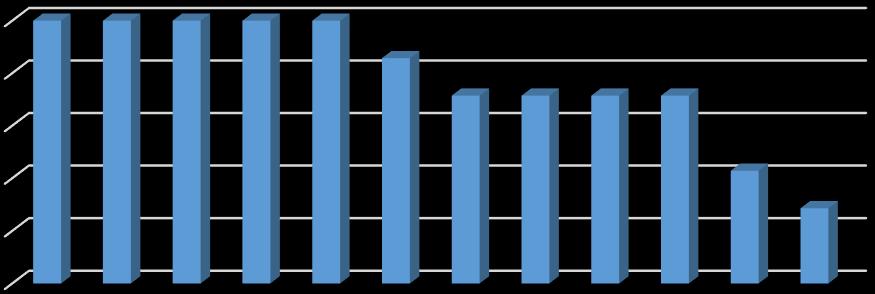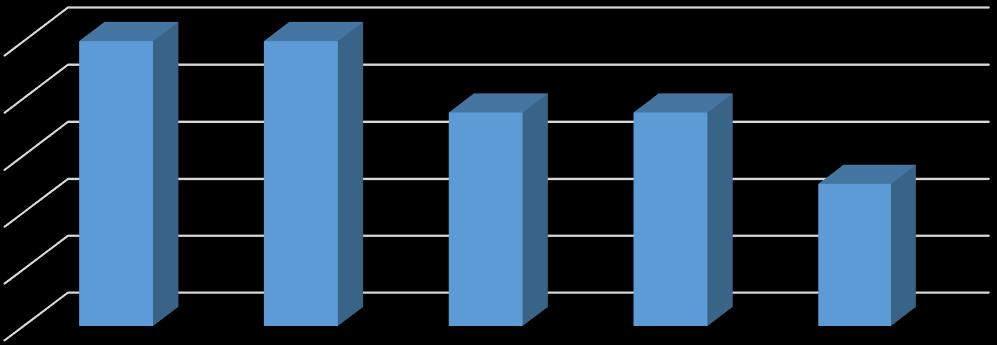www.worldnaturopathicfederation.org
Acknowledgements
The World Naturopathic Federation (WNF) greatly appreciates the participation of naturopathic institutions from around the world (outlined in the document) in providing the details required for this WNFNaturopathicRootsReport
This survey initiative was led by the Naturopathic Roots Committee with the following members including Heilpraktiker / naturopaths / naturopathic doctors (ND):
Tina Hausser, Heilpraktiker, Naturopath - Chair (Spain)
Dr. Iva Lloyd, ND (Canada)
Dr. JoAnn Yánez, ND, MPH, CAE (United States)
Phillip Cottingham, ND (New Zealand)
Dr. Roger Newman Turner, ND (United Kingdom)
Alfredo Abascal, Naturopath (Uruguay)
© World Naturopathic Federation May 2016
All rights reserved. Publications of the World Naturopathic Federation can be obtained from our website at www.worldnaturopathicfederation.org. Requests for permission to reproduce or translate WNF publications – whether for sale or for noncommercial distribution – should be addressed to info@worldnaturopathicfederation.org
All reasonable precautions have been taken by the World Naturopathic Federation to verify the information in this report. However, the published material is being distributed without warranty of any kind, either expressed or implied. The responsibility for the interpretation and use of the material lies with the reader. In no event shall the World Naturopathic Federation be liable for damages arising from its use.
Printed in Canada.
The World Naturopathic Federation (WNF) Naturopathic Roots Committee was created in June of 2015 to collect and codify the foundational knowledge of naturopathy including naturopathic history, definitions, principles and theories from around the world. A mandate of the WNF Naturopathic Roots Committee’s is to create ways of conserving, clarifying and communicating the traditional and global naturopathic knowledge and the core foundational principles and theories of naturopathy / naturopathic medicine.
The WNF Naturopathic Roots Survey is a follow-up to the survey conducted by the WNF in 2015 which was an environmental scan to determine the global naturopathic landscape The 2015 WNF survey was the first survey ever to assess the global status of naturopathy/naturopathic medicine. The results of that survey were published in June 2015 in the WNF document titled, 2015WorldNaturopathicFederationReport,findingsfrom the1stWorldNaturopathicsurvey. That report confirmed that naturopathy / naturopathic medicine is considered part of traditional medical practices in many countries, especially in Europe. North America was home of modern naturopathy as of the late 1890s. According to the 2015WorldNaturopathicReportthere are currently over 100,000 naturopathic practitioners worldwide, practicing in over forty countries. Given this was the first survey of its kind and that there are naturopaths in countries that did not respond, we are confident that the number of countries practicing naturopathy and the number of practicing naturopaths / naturopathic doctors is actually much higher. We are also aware of about one hundred (100) naturopathic institutions world-wide. Many of the early naturopathic schools were established in Europe, North America and the Western Pacific, where the historical origins of traditional naturopathy and modern naturopathic medicine are based.
This report is the first initiative of the WNF Naturopathic Roots Committee. It is a summary of a survey of naturopathic institutions from around the world. The survey was conducted between February and April of 2016.
Survey Design and Process
Between November 2015 and January of 2016 a twenty five (25) question survey was created and approved by the WNF Naturopathic Roots Committee. The survey included seven (7) questions specific to information relating to the person that filled out the survey and general questions about the school that they represented; four (4) questions were specific to the general curriculum; twelve (12) questions related to how naturopathic history, philosophy, principles and theories are integrated into the curriculum; two (2) questions related to the teaching of naturopathic and clinical diagnostics and modalities. The survey request was sent by email in February of 2016 to eighty-five (85) naturopathic institutions from forty-nine (49) different countries with a complete naturopathic program and a minimum standard of 1500 teaching hours, as set by the World Health Organization. Follow-up email requests and phone calls were made to participants who did not respond initially.
By the end of April 2016, thirty-six naturopathic institutions had responded to the survey; the ones that were incomplete or that were duplicates were deleted. We were left with thirty (30) complete responses, representing seventeen (17) different countries. The survey response rate was 36%.
Overview of the Survey Results
This survey indicated an extremely high degree of consistency within naturopathic curriculums worldwide. 100% of the respondents indicated that their curriculum includes the study of basic science, clinical science, naturopathic history, principles, philosophy and theories, naturopathic disciplines and clinical practice. Variations were seen in the number of hours taught for each section. Longer programs put a greater emphasis on basic and clinical sciences and on clinical practice.
All 30 respondents include naturopathic history as part of their curriculum with the majority, 70%, indicating that it was a separate teaching module. Similar results were seen with respect to naturopathic principles, philosophies and theories.
Almost 50% of the naturopathic institutions that responded to the survey were opened between the years 1975 and 2000. The increase in naturopathic education spanned all world regions that responded. The European schools have a greater tendency to have fewer students. The schools with the most students were primarily from North America, the Western Pacific and Asia.
Sixty-one (61%) of the schools offer programs of 3,000 hours or longer. The longer programs (over 4,000 hours) tend to be in North America and in the Western Pacific. The trend for newly established schools outside of Europe is to start naturopathic programs that are at least 3,000 hours in length. There is no correlation between the length of the program and the number of students.
100% of all schools teach basic sciences; clinical sciences; naturopathic history, principles, philosophy and theories; naturopathic disciplines (nutrition, herbal medicine, hydrotherapy, physical therapy, homeopathy, lifestyle counselling, etc.).
There is high agreement on the six naturopathic principles taught at the naturopathic institutions. The six consistent principles with their associated percentages include: First, Do No Harm (primumnonnocere) – 93%; Healing Power of Nature (vismedicatrixnaturae) – 97%; Treat the Cause (tollecausum) – 93%; Treat the Whole Person (Tolletotum) – 100%; Naturopathic Practitioner as Teacher (Docere) – 86%; and Disease Prevention and Health Promotion – 100%.
The following ten (10) naturopathic philosophies and theories are taught in over 70% of all naturopathic institutions – Vital Force, Integration of the Individual, Naturopathic Cures, Value of Fever, Therapeutic Order, Triad of Health, Unity of Disease, Hering’s Law of Cure,
Theory of Toxemia and Humoral Theory. The first three listed are taught in 96% of all schools.
All 30 respondents itemized the diagnostic methods taught in the naturopathic program. As expected, diagnostic methods essential to primary care and adequate diagnostic skills –clinical assessment and diagnostic exams - were included in 88% and 86% respectively of all programs. Some core diagnostic methods, such as physical exams and laboratory testing were limited in some regions due to government regulations. High consistency was shown in clinical assessment (standard medical assessment including auscultation, palpation, percussion, observation (tongue, skin, nails, eyes), neurological exam, cardiovascular exam, etc. – 92%; physical exams – 85%; laboratory testing (blood, urine, hair, sweat, saliva, stool, etc. – 80%; Iridology – 72%; and biotypology and somatotypese – 62% and traditional humoral diagnosis (including urine and pulse diagnosis – 62%.
Although the naturopathic profession is known for offering an eclectic array of treatment modalities, the following seven naturopathic modalities are core to most naturopathic programs: Clinical Nutrition, Applied Nutrition, Botanical Medicine, Hydrotherapy, Homeopathy, Physical Therapies and Lifestyle Counselling.
The diversity in naturopathic treatments seen by region reflects both the ability of naturopathy to easily support the traditional medicines from a country and the length of training that is offered. For example, minor surgery is generally only included in the longer programs such as those offered in North America. The inclusion of Ayurvedic therapies is seen in countries that already utilize Ayurvedic treatments.
The 2015 WNF report assessed the naturopathic profession from a practice perspective. This survey assessed naturopathic education. There was a fairly high degree of consistency in the results. As expected those treatment modalities that are commonly offered either as part of the core curriculum or as continuing education – such as energetic therapies – were higher in the 2015 survey that focused on practice.
Section Three of the report is broken down by world region and provides analysis and commentary unique to each region. The breakdown by region highlights the uniqueness of each region and the diversity of the naturopathic profession at large.
Section A: Participant’s & Institution’s Information
When analyzing the survey, the regions outlined by The World Health Organization (WHO) were used. The WHO groups its member states into six regions of the world:1 Africa, the Americas, Eastern Mediterranean, Europe, South-East Asia and Western Pacific. For the purpose of this report – as in the 2015 WNF Report -we further broke the Americas down into Latin America and North America.
Chart 1 looks at the number of naturopathic institutions by world region and indicates that survey results were received from five world regions. The European region was the most heavily represented with responses from thirteen (13) naturopathic institutions from seven (7) countries (Belgium, France, Germany, Slovenia, Spain, Switzerland, and United Kingdom), seven (7) responses were received from North America (Canada and the United States of America), four (4) from Latin America (Argentina, Chile, Mexico and Uruguay), four (4) from the Western Pacific (Australia and New Zealand) and two (2) from the South East Asia region (India and Nepal). We did not receive any responses from the regions of Africa and Eastern Mediterranean, although requests were sent to the naturopathic institutions located in both of these world regions
Chart 1: Responses by World Region (Q2), n=30
Responses by World Region
Survey Respondents
64% of the respondents indicated that they were the Dean or Director of their naturopathic program. 7% of those were Assistant Directors and 14% of those were either, naturopaths / naturopathic physicians or administrators and CEOs of their program. The average years of experience of the respondents was 14 years. Nine of the respondents (31%) indicated that they had over 25 years of experience in their position. We are comfortable that the respondents were qualified to accurately report on the status of their naturopathic curriculum.
Establishment of Naturopathic Institution
Naturopathy has been taught in Europe for centuries. Initially, it was taught via personal transmission of knowledge from generation to generation, books, documents about traditional naturopathic knowledge and personal teaching by internship.
Based on the details from the 2015WorldNaturopathicFederationReportand books on the history of naturopathy, we know that the first official naturopathic school was opened by Benedict Lust, student of Father Kneipp, in 1901 in New York, USA. In the early 1920’s formal naturopathic schools, such as the naturopathic school established by José Castro Blanco in Spain in 1925 started opening in Europe. Other naturopathic schools opened around that time including one in Munich, Germany by Josef Angerer Schule, which still exists today and was one of the survey respondents. One of the students of Benedict Lust’s Naturopathic school from New York was the French-Argentine ND Prof. Juan Estève Dulin. He was instrumental in bringing Naturopathy to South America, France and Spain. In 1919 he established The “Argentine Naturist Association”, which in 1934 changed to “Asociación Naturista de Buenos Aires”. Due to the efforts of Prof. Estève Dulin many naturopathic schools have been established in Argentina, Uruguay, Brazil, France and Spain for example the “Universidad Popular Naturista”, the “Escuela Argentina de Naturopatía” and “Escuela Naturista Prof. Juan Estève Dulin”.
Prior to 1950, most naturopathic schools were located in North America and Europe. In North America there were a number of naturopathic schools that were established between 1901 and the 1930’s, but due to various factors most of them were closed between the 1930’s and 1950’s. Since the 1970’s there has been a resurgence of the naturopathic profession worldwide and it continues to grow and expand into every region of the world.
Chart 2: Percentage of Schools Established, by Year (Q6) n=30
Percentage of Schools Established by Year
Chart 3: Year Naturopathic Institution was Established, by World Region
Year Naturopathic Institution was Established by World Region
Chart 3 indicates that the oldest existing naturopathic institutions are in Europe. Europe, North America and Western Pacific have had a number of naturopathic schools open since 1951 and each of these regions continue to still see a growth in the number of naturopathic programs. Asia indicates growth in naturopathic programs since 1976 – 2000. Most of the growth in naturopathic programs in Latin America has been within the last twenty (20) years.
Number of Naturopathic Students
There is tremendous variability in the number of naturopathic students that each naturopathic program facilitates. As seen in Table 1, 43% of the schools have between 100 and 249 students, yet 21% have over 400 students and 18% have less than 50. As indicated in Chart 4, the schools with the fewest students tend to be in Europe or Latin America and the schools with the highest number of students tend to be in North America or the Western Pacific. The greatest variability in size of school is seen in Europe.
Table 1: Number of Naturopathic Students (Q7) n=30
than 50 students
to 99 students
to 249 students
to 399 students
students
Chart 4: Students per Naturopathic Institution, by World Region
Students per Naturopathic Institution by World Region
Section B: Specifics about the Naturopathic Program
There is tremendous variability in the length of naturopathic programs but not in the content that is encompassed within the curriculum. The survey respondents demonstrated almost 100% consensus on the naturopathic principles and the inclusion of naturopathic history, philosophy and theories as part of the curriculum, as well as basic and clinical sciences and a practical clinical component.
The survey did indicate some variability in the specific naturopathic theories and diagnostic methods that were included as part of the curriculum, but similar to the results found in the 2015WorldNaturopathicReport, there is a core component that is consistent across almost all naturopathic programs.
Length of Naturopathic Program
The Word Naturopathic Federation has adopted the minimum education standards for a naturopathic program as set by the World Health Organization. That minimum standard is 1500 hours. Only two respondents indicated that their program was less than 1500 hours – but greater than 1200 hours.
One of the challenges of the naturopathic profession worldwide is the variability in the length of the naturopathic programs. Table 2, reflects this variability. However, there is a trend for naturopathic programs to be closer to a minimum of 3000 hours. This trend is expected to continue especially in those programs established of Europe
Table 2: Length of Naturopathic Program in Hours (Q8) n=28
When looking at the length of the program based on region we see that most of the variability is within Europe and Latin America. Chart 5 shows that the naturopathic programs in Asia are between 2000 and 3999 hours. Six of the seven schools in North America offer a program that is over 4000 hours and of the respondents from the Western Pacific all programs are over 3000 hours.
Chart 5: Length of Naturopathic Program, by World Region
Length of Naturopathic Program, by World Region
As indicated in Chart 6, the main correlation between the length of the naturopathic program and the number of students is seen with those programs of longer hours. Naturopathic programs that have over 400 students are longer programs, generally over 4000 hour In Europe there is a high number of naturopathic institutions, most of them accommodating less than 250 students To some degree the length of program depends on the educational regulation in each country.
Chart 6: Length of Naturopathic Program, based on Number of Students
Length of Program based Number of Students
As shown in Chart 7, the trend is that naturopathic programs started after the year 2000 –other than in Europe – tend to be 3,000 hours or more in duration
Chart 7: Year Naturopathic Program Established, by Length of Program
Year Naturopathic Program Established, by Length of Program
Type of Naturopathic Program
76% of the naturopathic institutions offer a full-time program. As seen in Table 3, there are a number of naturopathic institutions that offer a part-time option as part of a full-time program.
Table 3: Type of Naturopathic Program (Q9) n=29
When looking at the type of program by world region, Chart 8 highlights that part-time programs are only offered in Europe and Latin America. All world regions offer some degree of mixed programs – generally full-time programs with the option of taking part of the program part-time as well. The majority of programs in North America are only full-time programs.
Chart 8: Type of Naturopathic Program, by World Region
Type of Naturopathic Program, by World Region
Curriculum Content
Question 10 asked about the specific aspects of the content of the naturopathic program. 100% of all respondents indicated that their naturopathic program contained the following five elements: basic sciences; clinical sciences; naturopathic history, principles and philosophy; naturopathic disciplines and a practical clinical component.
Table 4: Components of the Naturopathic Curriculum (Q10) n=30
Naturopathic History, Principles, Philosophy and Theories
Naturopathy is a philosophical system of medicine with a long history and focus on the natural laws of healing In many countries, for example Europe and North America, the practice of naturopathy is considered part of their traditional system of medicine. What is new, within the last century, is referring to traditional systems of medicine within a country under the umbrella of naturopathy or naturopathic medicine.
Table 5 outlines when the naturopathic schools teach naturopathic history, philosophy and principles. Fifty-two percent (52%) of the respondents indicated that they teach these core elements throughout the program. Another 24% indicated that naturopathic history,
philosophy and principles were taught in the first two years.
Table 5: When Naturopathic History, Philosophy and Principles are Taught (Q22) n=30
Answers
Only 1st year
few years
the whole program
Other
As outlined in Chart 9, when analyzing the percentage of time spent in each aspect of the naturopathic program it is found that an average of 31% of the curriculum involves teaching naturopathic disciplines and 24.1% of the curriculum includes the practical clinical component.
Chart 9: Percentage of Time Spent in Each Aspect of the Naturopathic Curriculum (Q11) n=21
Percentage of Time Spent in Each Aspect of the Naturopathic Curriculum
There is some variation by world region as seen in Table 6. Asia has the highest percentage of clinical sciences at 35.3% compared to the average of 18.0%; European schools spend the highest percentage of time on Naturopathic history, philosophy and theories at 12.1% compared to the average of 7.3%; Latin America and Western Pacific were the highest in the percentage of time spent in Naturopathic Disciplines at 40.7% and 40.0% respectively compared to the average of 31%; North American schools reported the greatest percentage of time spent on the practical clinical component at 30.7% compared to the average of 24.1%. When analyzing the time spent in each aspect of the curriculum it is important to
note that the number of schools from Asia and Latin America that answered this question was three or less.
Table 6: Percentage of Time in Each Aspect of the Naturopathic Curriculum, by World Region
What may be more relevant is analyzing the breakdown in curriculum based on the length of the naturopathic program. Table 7 provides a look at the average number of hours spent in each aspect of the naturopathic program based on length of the overall program. The longer programs significantly increase the time spent on the basic sciences, clinical sciences and the practical clinical component.
Overall, the time spent on naturopathic history, philosophy and theories does not change significantly based on the length of the program.
Table 7: Average Number of Hours Spent in Each Aspect of the Naturopathic Curriculum, by Length of Program
As indicated in Chart 10, 100% of the respondents surveyed indicated that they teach naturopathic history, principles and naturopathic philosophies and theories. Seventy percent (70%) of the respondents indicated that each of these aspects of the naturopathic curriculum was taught as a separate teaching module.
Chart 10: Integration of Naturopathic Roots in the Naturopathic Curriculum (Q12-15, Q1 8-19) n=30
Integration in the Naturopathic Curriculum
Naturopathic History Naturopathic Principles Naturopathic Philosophies and Theories
Appendix B: Naturopathic Resources, outlines those resources that respondents indicated they use as reference materials to teach naturopathic history, philosophy and principles.
Naturopathic Principles
Naturopathic principles have formed the basis of naturopathic theory since its inception. It is the principles that define the practice of naturopathy / naturopathic medicine. This survey confirms that naturopathic schools teach the principles as a core element of the curriculum in all regions of the world.
The naturopathic principles were derived from historic medical books dating back to the 1500’s. In 1986 the American Association of Naturopathic Physicians (AANP) formed a committee that consisted of naturopathic doctors Pamela Snider, Jared Zeff and others from North America. This committee spent over three years reviewing the historic data and documents and interviewing over 1,000 people. In 1989, a definition of naturopathic medicine and the description of six core naturopathic principles was formally codified and accepted by the two North American national naturopathic associations (American Association of Naturopathic Physicians (AANP) and the Canadian Association of Naturopathic Doctors (CAND). As seen in this survey, the six principles are taught in naturopathic institutions in every region of the world.
Similar to the results in the 2015WorldNaturopathicFederationReport, the respondents indicated an extremely high degree of consistency in the naturopathic principles: First, Do Harm (Primumnonnocere) (93%); Healing Power of Nature (Vismedicatrixnaturae) (97%);
Treat the Cause (Tollecausum) (93%); Treat the Whole Person (Tolletotum) (100%); Naturopathic Practitioners as Teachers (Docere) (86%); and Disease Prevention and Health Promotion 100%).
Chart 11: Naturopathic Principles (Q16) n=30
Naturopathic Principles
First, Do No Harm (primum non nocere)
Healing Power of Nature (Vis medicatrix naturae)
Treat the Cause (Tolle causum)
Treat the Whole Person (Tolle totum)
Naturopathic Practitioners as Teachers (Docere)
Disease Prevention and Health Promotion
Table 8 indicates that in 83% of the naturopathic programs, naturopathic principles and philosophy are taught either as a stand-alone module or they are both stand-alone and integrated into other aspect of the naturopathic curriculum.
Table 8: How Naturopathic Principles and Philosophy are Taught (Q17) n=30 Answers
stand-alone, but integrated into other material
taught at the school
Other
Naturopathic Philosophies and Theories
The philosophies and theories of a system of medicine influence every aspect of assessment, diagnosis and treatment. They dictate what information is sought and how it is interpreted. They determine whether the emphasis of the patient-practitioner relationship is on addressing the factors that cause disease or treating the symptoms and pathology. They determine whether health and disease are viewed as logical or random, and whether a practitioner is trained to integrate all aspects of a patient or address specific pathological conditions.
Naturopathic medicine is a philosophical system of medicine defined by its principles and theories and supported by research Ensuring that naturopathic programs have a strong focus on naturopathic principles and theories is key to maintaining the essence of naturopathy from generation to generation.
All 30 respondents indicated a strong agreement in many of the naturopathic philosophies and theories that were taught in the naturopathic curriculum As described in Chart 12 the common theories and philosophies were: Vital Force (vis vitalis) / Theory of Vitality, Integration of the Individual - spiritual, psychological, functional, structural (Mind, Body, Spirit) and Naturopathy Cures - detoxification, revitalization, stabilization and regeneration were taught in 96% of the programs; Value of Fever 89%; Therapeutic Order 85%; Naturopathic Triad of Health and Unity of Disease 81%; Hering's Law of Cure and Theory of Toxemia 78%; Humoral Theory 74%; and Theory of Complex Systems and Emunctories / Emunctory Theory were taught in 67% of the programs.
12: Naturopathic Philosophies and Theories Taught (Q20) n=30
Naturopathic Philosophies and Theories Taught
Vital Force
Integration of Individual
Naturopathic Cures
Value of Fever
Therapeutic Order
Unity of Disease
Theory of Toxemia
Triad of Health
Hering's Law of Cure
Humoral Theory
Emunctories
Theory of Complex systems
Naturopathic Diagnostic Methods
All 30 respondents indicated the diagnostic methods that were taught in their naturopathic program. As expected those diagnostic methods essential to primary care and adequate diagnostic skills – clinical assessments and physical exams were included in 88% and 86% respectively of all programs. Some core diagnostic methods, such as physical exams and laboratory testing were reported to be limited in some regions due to government regulations. High consistency was shown in clinical assessment (standard medical
Chart
assessment including auscultation, palpation, percussion, observation (tongue, skin, nails, eyes), neurological exam, cardiovascular exam, etc at 92%; physical exams at 85%; laboratory testing (blood, urine, hair, sweat, saliva, stool, etc at 80%; Iridology 72%; Biotypology and somatotypese at 62%; Traditional humoral diagnosis (including urine and pulse at 59%; and Traditional Chinese diagnosis (including tongue and pulse) at 57%.
Chart 13: Diagnostic Methods Included in Naturopathic Programs (Q24) n=30
Diagnostic Methods included in the Naturopathic Programs
Clinical Assessment
Physical exams
Laboratory testing
Iridology
Biotyping and somatotypes
Traditional Humoral diagnosis
Traditional Chinese Diagnosis
Energetic Diagnosis
Gynecological / anal-rectal exams
Live blood cell analysis
Ayurvedic Diagnosis
Part of the program Continuing Education Not applicable
Other diagnostic methods that were included in some naturopathic programs included Energetic diagnosis – including therapies such as bio-electronic, Vega, Mora, Kinesiology muscle testing, radionics and radiesthesia (46%); gynecological / anal rectal exams (39%); live blood cell analysis (38%) and Ayurvedic Diagnosis (21%).
Chart 14 looks at diagnostic methods based on length of program. What is found is that the more medical diagnostic methods, such as physical exams, clinical assessment and laboratory testing are generally associated with longer naturopathic programs. Other diagnostic methods, such as iridology, energetic assessment and biotypology are more likely to be associated with shorter naturopathic programs. Chart 15 highlights that specific diagnostic methods, such as gynecological exams, live blood cell analysis or traditional humoral theory are more likely to be associated with specific regions, not length of the program.
Chart 14: Diagnostic Methods, by Length of Naturopathic Program
Diagnostic Methods, by Length of Naturopathic Program
Chart 15: Diagnostic Methods, by World Region
Diagnostic Methods, by World Region Asia (2 schools) Europe (13 schools) Latin America (4 schools) North America (7 schools) Western Pacific (4 schools)
Naturopathic Modalities
The practice of naturopathy is based on a philosophical system of medicine defined by its principles and theories and supported by research. Although naturopathy is and has always included an eclectic range of treatment options it is the naturopathic principles and theories that justify their inclusion in the naturopathic system of medicine.
The introduction of naturopathy into a country with a strong history of Traditional Medicine serves to provide a strong educational framework for most traditional systems of medicine. As such, when naturopathy is introduced the unique traditional theories, diagnostic methods and treatment modalities tend to be included with the naturopathic program. One example is the inclusion of the Maori philosophy of healing with the naturopathic programs in Australia and New Zealand
In the 2015WorldNaturopathicReport, the following eleven modalities or treatments were reported as having a high degree of consistency and being part of the practice of naturopathy / naturopathic medicine in each country: hydrotherapy (93%), massage techniques (88%), botanical medicine (87%), physical medicine practices (85%), energetic therapies (85%), lifestyle counseling (80%), clinical nutrition (80%), TCM practices (79%), right to direct access to patients (77%), homeopathy (77%) and colonics (75%). The respondents from the 2015WorldNaturopathicReportincluded naturopathic schools and naturopathic organizations (primarily national organizations).
All 30 respondents reported on the naturopathic modalities taught in their naturopathic program. As shown in Chart 16, there is a high degree of consistency in naturopathic modalities. The following is the list of the most common modalities and the percentage that they are taught in naturopathic programs: clinical nutrition (100%); applied nutrition (97%); botanical medicine (93%); hydrotherapy (83%); massage and soft tissue techniques (79%); physical manipulation (72%); counselling and naturopathic psychotherapy (72%); homeopathy (66%); pharmacology (66%); and energetic therapies (48%).
Chart 16: Naturopathic Modalities Taught (Q25) n=30
Naturopathic Modalities Taught
Clinical nutrition
Applied nutrition
Botanical medicine
Hydrotherapy
Massage and soft tissue
Physical manipulation
Lifestyle counselling
Homeopathy
Pharmacology
Energetics Therapy
Acupuncture
TCM practices
Osteopathy and other techniques
Chelation Therapy
Humoral Therapy
Hormone prescribing, glandulars
Intravenous therapies
Colonics
Minor surgery
Meso- or Prolo Therapy
Ayurvedic medicine
Unani medicine
Other modalities that are taught include: Acupuncture (45%); TCM practices (45%); Osteopathy and other manipulative techniques (45%); Chelation Therapy (38%); Hormone prescribing (34%); Humoral Therapy (cupping, Baunscheidt, etc.) (38%); Intravenous Therapies (31%); colonics (31%); minor surgery (28%); Meso- or Prolo- therapy / Neural Therapy (17%); Ayurvedic Medicine (14%).
When analyzing the results further it was found that hydrotherapy – which is typically considered part of the naturopathic system of medicine - was only taught in one of the four schools that responded from the Western Pacific; there were two schools in Europe that omitted hydrotherapy and botanical medicine as modalities; homeopathy was also omitted from schools in Asia, five of the schools in Europe and two of the schools from the Western Pacific. Humoral Therapy – a central therapy for traditional naturopathy - is primarily taught as a naturopathic modality in schools in Europe. Seventy-four (74%) of the respondents indicated that humoral therapy is considered a theory more so than a treatment modality.
Hormone prescribing, Intravenous therapies, Meso- or Prolo- therapy and minor surgery were taught in schools in North America, two schools in Europe and one in Asia. The
schools that taught one of these modalities were likely to teach all of them. These results correlate with what we know of the scope of practice in these regions and correlate with naturopathic programs with a higher number of program hours , especially in North America.
The 2015 World Naturopathic Federation survey asked naturopathic organizations to list the modalities that were practiced in their country. The 2016 WNF Naturopathic Roots survey asked the institutions about the naturopathic modalities that are taught in their programs. As Chart 17 indicates, there is a high degree of consistency between the two surveys.
17: Comparison of 2015 and 2016 WNF Survey Results
Comparison of 2015 and 2016 WNF Survey Results
Clinical nutrition
Botanical medicine
Hydrotherapy
Massage and soft tissue
Physical manipulation
Lifestyle counselling
Homeopathy
Energetics Therapy
Acupuncture
TCM practices
Colonics
Chart
2015 WNF Profession's Survey 2016 WNF Naturopathic Roots Survey
Section 3: Naturopathic Roots, by World Region
Africa
The World Naturopathic Federation (WNF) is aware of two naturopathic institutions in Africa. The University of Western Cape in South Africa which is a 4200-hour program that opened in 2002 and the Zambia Institute of Natural Medicine and Research, which was started by the World Health Organization and AFRO, based on the 4200-hour curriculum of the Canadian College of Naturopathic Medicine in Canada.
Both of these schools were sent surveys, but neither responded.
Asia
Naturopathic education is rich in Asia with over 20 educational institutions in India offering training in naturopathy. Most of the naturopathic schools in India have opened in the last 20 years. Nepal has a program, the Nepal Yoga and Nature Cure Association and Institute of Natural Medicine, which is a 3½ year program open since 1968. Recently Thailand began a four-year naturopathic program in a public state university.
Nineteen (19) surveys were sent to naturopathic institutions from Asia. We received two responses, one from India and the other from Nepal. Typical of the data that we have on schools from Asia, it is the longer naturopathic programs that are offered. The program from India is 4½ years in length and the program from Nepal is 3½ years.
Both are full-time programs and both teach all of the naturopathic theories outlined in the survey. What is unique about naturopathy in India is that it is combined with yoga. In fact, most graduates earn the title, BNYS – which is Bachelor of Naturopathy and Yogic Studies.
Most of the naturopathic diagnostic methods outlined in the survey were taught in these schools both as part of the naturopathic curriculum and as ongoing continuing education. The diagnostic method not taught in either program was that of Traditional Chinese Medicine. Ayurvedic Medicine and Biotyping were only taught in one of the two programs.
The following naturopathic modalities were included in both programs: Clinical Nutrition, Applied Nutrition, Botanical Medicine, Hydrotherapy, Acupuncture, Humoral Therapies, Physical Medicines, Osteopathy, Counseling, Massage, Colonics and Energetic Therapies. Hormone Prescribing, Intravenous Therapy, Meso- or Prolo Therapy, Minor Surgery and Chelation were only listed in one of the programs and Homeopathy, Ayurvedic Medicine, Unani Medicine or Pharmacology were not included in either program.
Eastern Mediterranean
Naturopathy was introduced to the region of Eastern Mediterranean after 2000. As far as we are aware the only school in this region is in Morocco and the school is a division of the Institut Europeen d’Etude et de Recherche (IEERTH) from France.
Europe
Europe is the home of traditional naturopathy. It has been practiced in Europe, albeit under different names, for centuries. Most of the philosophies and theories that we associate with the core of naturopathy originated in Europe. There are at least twentyseven (27) countries in Europe that have naturopathic practitioners. We are currently aware of forty-five (45) naturopathic schools that meet the minimum standard of 1500 hours. These schools span over twelve (12) European countries. The survey was sent to thirty-one (31) naturopathic institutions with responses from thirteen (13) or 41%
The greatest diversity in naturopathic education is in Europe. Two of the respondents indicated that their naturopathic institutions opened before 1950, one between 1951 and 1975, four of them opened between 1976 and 2000 and six after the year 2000. The length of naturopathic programs offered varies with one of the respondents offering a program just under 1500 hours, three of the programs were between 1500 and 1999 hours, one was between 2000 and 2999 hours, four of the programs were between 3000 and 3999 hours and one program was over 4000 hours. Two of the respondents from Europe did not indicate the length of their program. The smallest naturopathic institutions are found in Europe with 41% indicating that their total enrollment was less than 50 students, 25% have an enrolment of 50 to 99 students and 25% 100 – 249 students. Only one school indicated that its enrollment was over 250 students and this correlated with the 4000+ hour program. None of the schools that answered the survey have student enrollments that are over 300 students.
The European schools also have the highest number of part-time programs, in fact other than one school in Latin America all other part-time programs reside in Europe. Of the thirteen responses, only two schools indicated that their program was full-time; three of the schools offered a mix of full-time and part-time and six of the schools, or 46%, indicated that they only offered part-time studies.
As indicated in Chart 18, philosophies and theories are an integral part of naturopathic curriculums in Europe. Nine of the twelve naturopathic theories included in the survey are taught in 85% or more of the European schools. Hering’s Law of Cure and Theory of Complex Systems are taught in 69% of the schools and theories around Emunctories are taught in 62% of the European naturopathic schools.
Chart 18: Naturopathic Philosophies and Theories - Europe
Naturopathic Philosophies and Theories - Europe
There is tremendous variability in naturopathic diagnostic methods that are taught. Some of the respondents indicated that, due to local laws, they were not able to teach clinical assessment, laboratory testing and other common naturopathic diagnostics. One of the respondents stated, “Philosophy is the soul of Naturopathy! in France, we have no right to diagnose; we use morphology, anamnesis, iridology, pulsologie”. Chart 19 looks at the range of naturopathic diagnostic methods in European schools.
Chart 19: Naturopathic Diagnostic Methods – Europe
Naturopathic Diagnostic Methods - Europe
There is a wide range of naturopathic treatment modalities taught in Europe. Clinical nutrition and applied nutrition are taught in 100% of the European schools and Botanical medicine, physical modalities including massage techniques are taught in 85% of the schools. Chart 20 looks at the array of naturopathic modalities that are taught in at least 50% of the European naturopathic schools.
Chart 20: Naturopathic Modalities Taught – Europe
Naturopathic Modalities Taught - Europe
Clinical nutrition and dietetics (food as medicine,…
Applied nutrition (nutritional supplements, enzymes,…
Hydrotherapy
Botanical medicine
Physical manipulation
Massage and soft tissue techniques
Humoral Therapy: cupping, Baunscheidt, leeches, etc.
Counselling and naturopathic psychotherapy /… Pharmacology
Homeopathy
Other Traditional Chinese Medicine (TCM) practices
Osteopathy and other manipulative techniques
Energetic Therapies
Other therapeutic modalities taught in some schools include acupuncture, which is taught in 46% of the schools; chelation therapies 31%; hormone prescribing and colonics is taught in 23% of the schools; Intravenous therapies and Meso- or Prolo-therapy is taught in 15% and Minor surgery, Ayurvedic and Unani medicine are all taught in one school, or 8% of the schools.
Latin America
Naturopathy has grown quite extensively in Latin America in the last 25 years. As far as we are aware, naturopathic institutions exist in seven Latin American countries . Surveys were sent to thirteen (13) institutions and we received responses from four (4) naturopathic institutions or 31%.
The majority of naturopathic schools are programs over 2,000 hours and offer enrolment to 100 to 250 students. 3 of the 4 respondents offer full-time programs. One of the schools, the one offering a 1,728 hour program, was a part-time program.
Chart 21 outlines the differences in the naturopathic philosophies and theories taught between the full-time and part-time programs in Latin America. As illustrated, the shorter part-time program teaches only four (4) naturopathic philosophies and theories.
Chart 21: Naturopathic Philosophies and Theories – Latin America
Naturopathic Philosophies and Theories - Latin America
Vital Force (vis vitalis) / Theory of Vitality
Unity of Disease
Hering's Law of Cure
Therapeutic Order
Emunctories / Emunctory Theory
Naturopathy Cures - detoxification, revitalization,…
Theory of Toxemia
Value of Fever
Naturopathic Triad of Health
Integration of the Individual - spiritual, psychological,…
Humoral Theory
Theory of Complex Systems
Full-time programs Part-time program
Similar to the analysis on naturopathic philosophies and theories, the difference seen in diagnostic methods is between full-time and part-time programs. Chart 22 outlines the diagnostic methods taught in Latin America. The full-time programs in Latin America teach eight or more diagnostic methods; the part-time program teaches only three: Iridology, Energetic Diagnosis and, Biotypology and Somototypes.
Chart 22: Naturopathic Diagnostic Methods – Latin America
Naturopathic Diagnostic Methods - Latin America
Physical exams
Clinical assessment
Gynecological exams
LaboratoryTesting
Iridology
Live-blood cell analysis
Humoral Diagnosis
Traditional Chinese Diagnosis
Ayurvedic Diagnosis
Energetic Diagnosis
Biotypology and somatotypes
Of special note, four of the naturopathic diagnostic methods – Gynecological, anal-rectal exams, Live Blood Cell Analysis and Traditional Humoral diagnosis were offered by one school as part of continuing education, not part of the full-time program.
The modalities taught in the Latin American schools are fairly consistent, irrespective of full-time versus part-time programming. Chart 23 outlines the frequency in which naturopathic schools teach the different naturopathic modalities.
Chart 23: Naturopathic Modalities Taught – Latin America
Naturopathic Modalities Taught - Latin America
Clinical nutrition and dietetics (food as medicine,…
Applied nutrition (nutritional supplements, enzymes,…
Botanical medicine
Homeopathy
Physical manipulation
Other Traditional Chinese Medicine (TCM) practices
Energetic Therapies
Hydrotherapy
Counselling and naturopathic psychotherapy /…
Massage and soft tissue techniques
Pharmacology
Acupuncture
Ayurvedic medicine
Osteopathy and other manipulative techniques
Chelation Therapy
Colonics
North America
North America is considered home to modern naturopathy. According to our current research, there are eleven naturopathic institutions within Canada and the United States. North America has the highest accreditation standard for naturopathic education. Seven of the programs at educational institutions in North America are accredited by the Council on Naturopathic Medical Education (CNME) and all offer programs in excess of 4,000 hours. CNME is an independent accrediting agency formed in 1978 with the sole purpose of accrediting naturopathic medical programs in North America. The remaining four naturopathic schools exist in Quebec, Canada. Three of the four Quebec schools offer a naturopathic program that is at least 2,000 hours in length, one of the schools - L'École d'enseignement supérieur de naturopathie (EESNQ) offers a program that is over 4,000 hours and is currently working towards CNME accreditation. Survey requests were sent to all eleven institutions offering a naturopathic program in in North America. Seven (7) responses were received or 64%. Six of those were from CNME accredited programs and one from a Quebec school.
All of the programs offered in North America are full-time programs Generally speaking, North America has the largest student enrollment of all the naturopathic programs with 67% of the CNME accredited programs having an enrolment of over 400 students at a time. Two of the CNME programs and the school from Quebec offer enrolment to 100 – 249
students at a time. Two of the schools from North America have been around for over 40 years. 67% of them opened between 1976 and 2000 and one opened in the last 15 years. All CNME accredited programs, except for BINM from British Columbia Canada, offer a degree. BINM has applied for degree granting status.
The naturopathic philosophies and theories taught in the naturopathic programs in North America are fairly consistent as seen in Chart 24
Chart 24: Naturopathic Philosophies and Theories – North America
Naturopathic
Philosophies
and Theories - North America
The only school in North America that does not teach the diagnostic methods of physical exams, clinical assessment and gynecological exams stated that the teaching of these topics was not allowed in the province of Quebec for naturopathic schools. Chart 25 outlines the diagnostic methods taught in the North American naturopathic programs
Diagnostic methods taught in the school from Quebec and by CE in some of the other schools include: Iridology, Live-blood cell analysis, Ayurvedic practices and Energetic diagnosis. Traditional Humoral diagnosis was also taught in one of the CNME accredited programs and in the Quebec school. In the comment section in the survey, the schools in North America stressed the importance of ensuring that naturopathic philosophies and theories are integrated throughout the program and in patient case studies.
Chart 25: Naturopathic Diagnostic Methods – North America
Naturopathic Diagnostic Methods - North America
Physical Exam
Clinical Assessment
Gynecological Exams
Laboratory Testing
Biotypology and somatotype
Traditional Chinese Diagnosis
Traditional Humoral Diagnosis
Chart 26 outlines the similarity in the naturopathic modalities taught in the naturopathic programs in North America. The following naturopathic modalities were taught in all of the North American schools – Clinical Nutrition, Applied Nutrition, Botanical Medicine, Hydrotherapy, Homeopathy, Counselling and Lifestyle Education, Pharmacology and Hormone Prescribing.
Chart 26: Naturopathic Modalities Taught – North America
Naturopathic Modalities Taught - North America
Western Pacific
Naturopathy was introduced into the Western Pacific around 1900. It has a rich history in this region, especially in Australia and New Zealand. We are aware of at least eight schools in the Western Pacific that offer naturopathic programs that are at least 1500 hours in length. In fact, this region has the greatest discrepancy; naturopathic programs are either less than 1500 hours or greater than 3,000. They have very few that are in middle. We sent surveys to eight (8) schools from this region and of the four respondents all offer full-time programs that are in excess of 3,000 hours in length.
The oldest school in Australia, the Southern School of Natural Therapies from Melbourne was established in 1961 and has offered a 4-year degree course for over 15 years. There are a number of colleges continuing to deliver Advanced Diploma qualifications, however these are being phased out. In July 2014 the Community Services & Health Industry Skills Council (CSHISC), announced the removal of the Advanced Diplomas of naturopathy, western herbal medicine, homeopathy, and nutritional medicine from the health training package, meaning the new educational standard for these is now a Bachelor degree This transition from Advance Diploma to Degree will be completed by the end of 2018 as this is the deadline for currently enrolled students to complete their studies.
One of the schools opened between 1951 and 1975, two of them between 1976 and 2000 and one has opened since 2000. All but one of the schools offer enrolment to about 100 – 249 students as a time. One school, Endeavor College of Natural Health from Australia, has a total enrollment of over 400 students at a time.
Chart 27 looks at the naturopathic philosophies and theories taught in the schools from the Western Pacific. There is an extremely high degree of consistency in the content from this region.
27: Naturopathic Philosophies and Theories – Western Pacific
Naturopathic Philosophies and Theories - Western Pacific
As seen in Chart 28, there are four main diagnostic methods taught in the schools from the Western Pacific and those are – physical exams, clinical assessment, laboratory testing and Iridology. The schools from the Western Pacific identified a number of the naturopathic diagnostic methods as being non-applicable for their region including: gynecologic exams, life blood cell analysis, traditional humoral diagnosis, Ayurvedic diagnostic methods and energetic testing.
28: Naturopathic Diagnostic Methods – Western Pacific
Diagnostic Methods - Western Pacific
Chart
Chart
Only Clinical Nutrition and Botanical Medicine were reported to be taught as a naturopathic modality in 100% of the naturopathic institutions from the Western Pacific. Chart 29 outlines the range of naturopathic modalities taught in this region. It is interesting to note that this region has the smallest range of naturopathic modalities that are commonly taught.
Chart 29: Naturopathic Modalities Taught – Western Pacific
Naturopathic Modalities Taught - Western Pacific
None of the schools that responded from the Western Pacific indicated that they teach the following naturopathic modalities: acupuncture, humoral therapies, Ayurvedic practices, Unani practices, physical manipulation, Osteopathic or other manipulative techniques, hormone prescribing, intravenous therapies, Meso- or Prolo- therapies, minor surgery, colonics, chelation therapy, energetic therapies.
A school from New Zealand indicated that as part of their naturopathic training they also included the Maori philosophy of healing which is the traditional medicine of this region.
Appendix 1: Demographics of Respondents / Naturopathic Institutions
Argentina
Mario Schwarz Director
Fundación Naturopática (est. 1990)
http://www.naturoterapias.com.ar/fna/
Australia
Dr Kate Broderick Director of Education
Endeavour College of Natural Health (est. 1975)
http://www.endeavour.edu.au
Belgium
Fatiha Lavand'homme Aït-Saïd Director
Institut Supérieur de Naturopathie
Traditionnelle ISNAT asbl (est. 2012) http://isnat.eu/
Canada
Dr. Nick de Groot, ND Dean
Canadian College of Naturopathic Medicine (CCNM) (est. 1975) http://www.ccnm.edu/
Canada
Dr. David Scotten, ND Dean
Boucher Institute of Naturopathic Medicine (est. 2000) http://www.binm.org/
Canada
Marie-Helene Lessard Educational Director
Institut d’enseignement en Science
Naturopathique IESN (est. 1966) http://www.institutdesante.org/fr/index.php
Chile
Jorge Javier Neira Bravo Director
Instituto Profesional Carlos Casanueva
(est. 2006) www.carloscasanueva.cl
France
Frédéric Boukobza Director
Institute Supérieur de Naturopathie agree Fenahman ISUPNAT (est. 1983)
http://www.isupnat.com/
France
Mélody Molins Headmistress Institut Hildegardien (est. 2006) http://www.institut-hildegardien.com/
France Stefanini
Assistant Director CFPPA de Hyères (est. 1965)
http://www.hyeres.agricampus.educagri.fr/
France
Daniel Kieffer Manager
Collège Européen de Naturopathie Holistique CENATHO (est. 1990) http://www.cenatho.fr
Germany
Marita Schirrmacher Director
Berufsfachschule für Naturheilweisen “Josef Angerer” (est. 1936) http://www.ausbildung-zumheilpraktiker.de/
India
Prof. Dr. B.T. Chidananda Murthy
Principal
JSS Institute of Naturopathy & Yogic Sciences (est. 1997) http://www.jssinys.org/
Mexico
Dr. Maria Enriqueta Flores Fernandez Universidad Popular Autónoma de Veracruz UPAV (est. 2012) http://www.universidadupav.edu.mx/
Nepal
Prof.Dr. Surya Bahadur Karki
Nepal Yoga and Nature Cure Association NYNCA (est. 1994) www.naturallifes.com/
New Zealand
Phillip Cottingham, ND Principal
Wellpark College (est. 1990) http://wellpark.co.nz/
New Zealand
Robyn Carruthers
Deputy Director
South Pacific College of Natural Medicine (est. 1967) http://www.spcnm.ac.nz/
New Zealand
Scarlett Cooper Manager
Lotus Holistic Centre (est. 2002) http://www.lotusmassage.co.nz/
Slovenia
Simon Premrl Director
Naturopatska Šola Saeka (est. 2014) http://www.saeka.si/
Spain
Alon Meshel
Administrator Naturaclass (est. 2003) http://naturaclass.net/
Spain
Reyes Ordoñez Director
Centro Andaluz de Naturopatía (est. 1986) http://ceanacademia.net/naturopatia/
Switzerland
Lotti Westmoreland
Dean
Schule für Asiatische Körper- und Bildungsarbeit SAKE Bildungszentrum (est. 1985) http://www.sake.ch
Switzerland
Stefan Schaub CEO
Schaub Institute Akademie (est. 2012) http://www.schaub-institut.ch/
United Kingdom
Hermann Keppler Principal College of Naturopathic Medicine (CNM) (est. 1998)
http://www.naturopathy-uk.com/
United Kingdom
BCOM (est. 1930) http://www.bcom.ac.uk
United States of America
Marcia Prenguber, ND Dean
University of Bridgeport, College of Naturopathic Medicine (est. 2014) http://www.bridgeport.edu/academics/newcenter-for-naturopathic-medicine/
United States of America
Jane Guiltinan, ND
Dean Bastyr (est. 1978)
http://www.bastyr.edu/
United States of America
Paul Mittman, ND, Ed.D President
Southwest College of Naturopathic Medicine (est. 1992) http://www.scnm.edu/
United States of America
Melanie Henriksen, ND, LAc., CNM
Dean
National University of Natural Medicine (NCNM) (est. 1956) http://ncnm.edu/
Uruguay
Isabel Yost, Director
Escuela de Naturopatía del Uruguay (est. 2013)
http://www.naturopatiaysalud.com/
Appendix II: Naturopathic Resources - History, Philosophy and Theories
The following naturopathic history resources were listed:
• Barron P. 2003. HydrotherapyTheory&Technique.3rd Ed. Pine Island Publishers, Vestavia Hills.
• Bensabat Dr Soly 1999. ViveleStress. Éditions Robert Laffont.
• Berkowsky B. 2011.VitalChiSkin-BrushingSystem:TheQuickStartProgram. Joseph Ben Hil-Meyer Research Press
• Block, Daniel. 2003. TheRevolutionofNaturopathicMedicine:RemainingTruetoOur Philosophy.Collective Co-op.
• Boudreau N. 1994. Jeûnerpoursasanté,lesecretdurajeunissementbiologique. Ed. Le jour.
• Carton Paul. 1930. Làrtmedical:l’individualisationdesrèglesdesanté. Ed. Carton Paul
• Collectif Fenahman. 2008. Votrepremièrevisitechezlenaturopathe.Ed. Les Éditions le souffle d’or.
• Dextreit Raymond. 1961. Voilàlesommeil, «Vivreenharmonie».Ed. de la revue
• Di Stefano V. 2006. Holismandcomplementarymedicine.Ed. Allen and Unwin.
• Dick-Kronenberg L. 2012. TheultimatetextinConstitutionalHydrotherapy. Spokane, WA: The Carroll Institute of Natural Healing. Ed. Lulu.
• Dowling P. 2007. Journeysbacktohealth.Ed. David Bateman.
• Eliopoulos C. 2013. Invitationtoholistichealth:aguidetolivingabalancedlife.Ed. Jones & Bartlett Learning.
• Fédération francaise de la naturopathie. 2008. Lelivreblancdelanaturopathie.Ed. Yves Michel.
• Hahnemann, Samuel. 1921.OrganonofMedicine.6thEdition.Ed. New Delhi:Indian Books Syndicate.
• Jensen B. 1965. Guidetodietanddetoxification . Ed. McGraw-Hill
• Kent, James Tyler. 1900. LecturesonHomeopathicPhilosophy. Ed. Khrhart&Karl
• Kieffer Daniel. 1997. Lanaturopathiepourtoujours.Ed. Jacques Grancher.
• Kieffer Daniel. 1991. Naturopathie,Gérezvotresantéparunebonnehygiènedevie, Préventionetauto-guérison.Ed. Marabout.
• Kieffer Daniel. 1993. L’homme empoisonné, cures végétales pour libérer son corps et son esprit, Kieffer D., Éditions Jacques Grancher
• Kieffer Daniel. 1997. Guidepersonneldesbilansdesanté.
• Kieffer Daniel. 2007. Encyclopédiehistoriquedelanaturopathie. Éditions Jouvence.
• Kuhne Louis. 1919. Lanuevacienciadecurar.Ed. Kuhne y Vander
• Kuhne Louis. 1917. ScienceofFacialExpressions.Ed. Society of Metaphysicians.
• Lee-Treweek, G., Heller, T. & Katz, J. 2006. Perspektivesoncomplementaryand alternativemedicine.Ed. Routledge.
• Lindlahr Henry. 1918. PhilosophyofNaturalTherapeutics. The Lindlahr Publishing Co
• Lindlahr.Henry. 1922. PracticeofNaturalTherapeutics.The Lindlahr Publishing Co.
• Lindlahr Henry. 1913. Philosophy&PracticeofNatureCure.Ed. The Nature Cure
Publishing Company
• Lloyd, Iva. 2009. TheHistoryofNaturopathicMedicine,aCanadianPerspective. Ed. McArthur & Co., Canada.
• Magny J.C. 1996. Lanaturopathieapprivoisée.Ed. De Mortagne.
• Masson André. 1980. LeSoleil,l’hommeetlasanté,Ed Prosveta.
• Mitchell A, Cormack M. 1998. TheTherapeuticRelationshipinComplementaryHealth Care.Ed. Churchill Livingstone.
• Morin Pierre-Jean, Parent Gilles. 2006. Lafluoration;autopsieduneerreurscientifique. Ed. Berger.
• Murray & Pizzorno. 2012. EncyclopediaofNaturalMedicine.Ed. Atria Books.
• Murray & Pizzorno. 1998. EncyclopediaofNaturalMedicine.Ed.Prima Publishing.
• Murray Michael. 2000. TotalBodyTune-up. Ed. Bantam Books, USA.
• Navarro Manual. 1998. TeoríadelaNaturopatía.
• Passebecq André. 1970. Initiationàlasantéintégrale. Ed. Institut de culture humaine.
• Pizzorno J. Murray M. 2013. TextbookofNaturalMedicine.Ed. Elsevir.
• Robson T. 2004. AnIntroductiontocomplementarymedicine.Ed. Allen & Unwin.
• Roger S.A. 2002. DetoxifyorDie.Ed. Sand Key Company.
• Roeder G. 2000. Healingwithwater.Ed. Alive Books.
• Rolfe R. 2002. TheFourTemperaments.Ed. Da Capo Press.
• Sarma Acharya Laxman. 1933. PracticalNatureCure.Ed. Nature-Cure Pub.House
• Shelton Herbert M. 2010. TheHistoryofNaturalHygieneandPrinciplesofNatural Hygiene.Ed. Whitefish: Kessinger Publishing.
• Shelton H. 2010. AnintroductiontoComplementaryMedicine. Ed. Sydney: Allen & Unwin. M.
• Sinclair M. 2008. ModernHydrotherapyfortheMassageTherapist. Ed. Lippincot Williams and Wilkins.
• Singh SJ. 1980. History&PhilosophyofNatureCure.Ed. Nature Cure Council of Medical Research.
• Spitler Harry. 1948. BasicNaturopathy . Ed. American Naturopathic Association
• Stanway Andrew, Grossman Richard. 1988. Lelivredesmédecinesnaturelles, Ed. Robert Laffont
• Starenkyj Danièle. 1990 Lavieenabondance . Ed. Orion.
• Stone J. 2002. Anethicalframeworkforcomplementaryandalternativetherapists. Ed. Routledge.
• Tilden John Henry. 1921. Toxemíaexplicada.
• Turner R. 1991. Naturopathicmedicine:treatingthewholeperson.Ed. Thorsons Publications.
• Stone Julie R. 2002. Anethicalframeworkforcomplementaryandalternative therapists.Ed. Cornwall: Routledge.
• Vasey C. 1992. ManueldeDétoxication , Ed. Jouvence.
• Vasey C. 1994. Léquilibrésanté.Ed. Jouvence.
• Vasey C. 2002. Leau,sourcevitaledevotresanté.Ed. Jouvence.
• Vasey Christopher. 1965. L’équilibreacido-basique.Ed. Jouvence.
• Walden Rev Ed. Saffron. C.W. Daniel, 1975. (Previously published as Lindlahr, H. Nature Cure, Volume I, Philosophy and Practice Based on The Unity of Disease and
Cure. Chicago 1921.)
• Watson B. Stockton S. 2002. Renewyourlife,improveddigestionanddetoxification.Ed. Renew Life Press.
• Zampieron E, Kamhi Ellen. 1999. TheNaturalMedicineChest. Ed. M. Evans & Company.
The following authors were also listed (without reference to the exact book titles):
• Aschner, Bernhard
• Angerer, Josef
• Bach, Edward
• Bingen v., Hildegard
• Boericke, William
• Colonques, Josep
• Hahnemann, Samuel
• Hering, Ewald
• Huneke, Ferdinand
• Kent, James Tyler
• Kneipp, Sebastian
• Lessard, Marie-Hélène
• Lust, Benedict
• Murray, Michael
• Palmetti, Nestor
• Pizzorno, Joeseph
• Snider, Pamela
• Vasey, Christopher
• Vogel, Alfred
• Zeff, Jared
